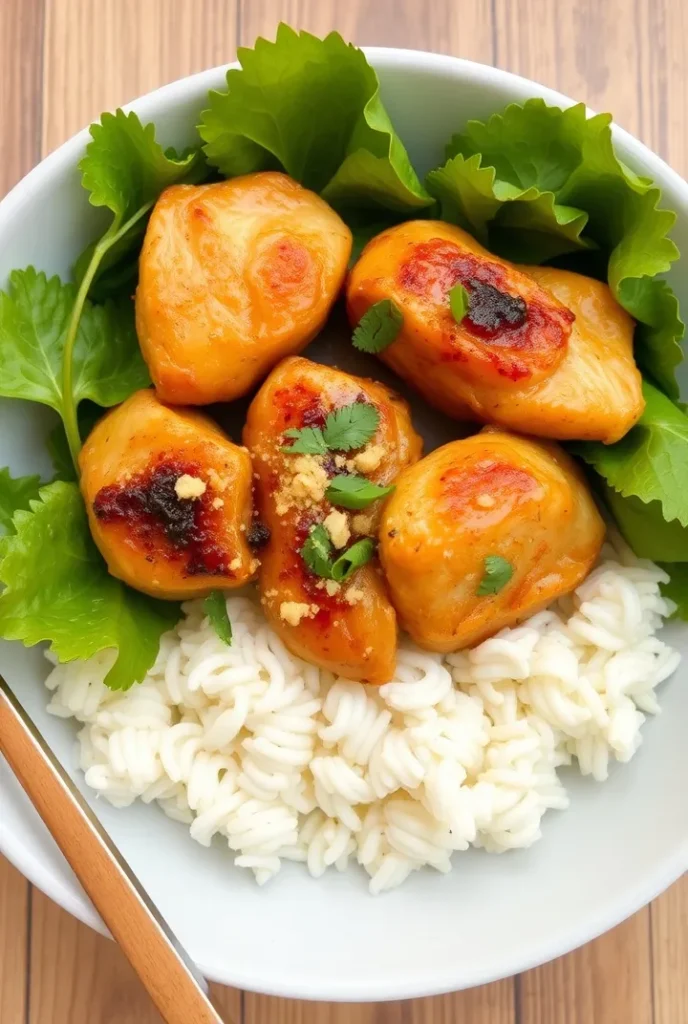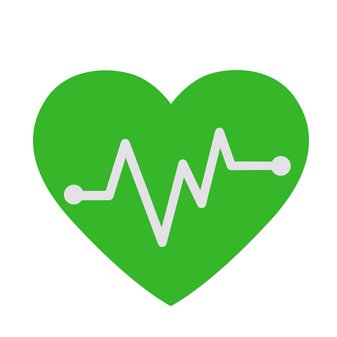Let’s be real – it’s tough to choose lunch ideas that keep you full but not heavy on calories. It can seem like a tricky game. You need a meal that fills you up and stops you from wanting more food soon after. The trick? Add lots of protein and keep the calories low.
Protein is key for a lunch that keeps you full and active all day. It uses up more energy to break down than carbs or fats, so your body uses more calories to handle it. Cool, huh?

Why Low Calorie High Protein Lunches Matter
Your lunch sets up the rest of your day. If you miss out on protein, you may end up diving into the snack machine by 3 PM. Not the busy afternoon you wanted.
Eating lots of protein in the middle of the day can keep your blood sugar even. This way, you won’t crash and feel the need to nap at your desk. Also, protein helps build and keep muscle, which makes your body burn fuel well.
What do most food experts say? Try for 20-30 grams of protein each meal. This might seem big, but it’s not hard to reach. Just a palm-sized piece of chicken has about 25 grams.
You don’t have to eat too little to keep calories down. Choose smart and get the most nutrition from each calorie. Go for full and tasty options that are good for you too.
Quick Chicken Based Lunch Options
Chicken is the MVP of high protein, low calorie meals. It’s versatile, affordable, and cooks up fast. A 4-ounce serving of skinless chicken breast packs about 26 grams of protein for only 185 calories.
Try a simple chicken and veggie stir-fry. Toss diced chicken breast with bell peppers, snap peas, and broccoli in a hot pan with just a spray of cooking oil. Season with garlic, ginger, and a splash of low-sodium soy sauce. The whole thing takes maybe 10 minutes and delivers serious flavor.
Chicken salad gets a bad rap for being loaded with mayo, but it doesn’t have to be. Mix shredded rotisserie chicken with Greek yogurt instead of mayonnaise. Add diced celery, grapes, and a handful of chopped walnuts. Serve it over mixed greens or stuff it in a whole wheat pita.
Buffalo chicken lettuce wraps are another winner. Mix cooked chicken with hot sauce and a tiny bit of ranch made with Greek yogurt. Wrap it up in butter lettuce leaves with some diced celery and carrots. You get all the buffalo chicken flavor without the heavy bread or excess calories.
Chicken and vegetable soup is perfect for meal prep. Make a big batch on Sunday and portion it out for the week. Use chicken thighs for extra flavor – they’re still lean but have more taste than breasts. Load it up with vegetables like carrots, celery, zucchini, and spinach.
Fish and Seafood Power Meals
Seafood is protein heaven. Most fish and shellfish are naturally low in calories but high in protein. Plus, you get those healthy omega-3 fatty acids that your brain and heart love.
Canned salmon makes lunch prep a breeze. Mix it with avocado, diced cucumber, and a squeeze of lemon. Serve over mixed greens or with some whole grain crackers. One can of salmon gives you about 45 grams of protein for roughly 200 calories.
Shrimp is another superstar. These little guys pack about 20 grams of protein per 3-ounce serving for only 84 calories. Sauté them with garlic and toss over zucchini noodles with cherry tomatoes and fresh basil.
Tuna doesn’t have to mean boring tuna salad. Try a Mediterranean-style tuna bowl with canned tuna, chickpeas, diced tomatoes, cucumber, red onion, and olives. Dress it with lemon juice and a drizzle of olive oil.
Cod and other white fish cook up in minutes. Season a fillet with herbs and bake it while you steam some vegetables. Pair it with cauliflower rice for a complete, filling meal that won’t weigh you down.
Smoked salmon brings luxury to your lunch break. Layer it on cucumber slices with a dollop of Greek yogurt mixed with dill. It feels fancy but takes zero cooking time.
Plant Based Protein Lunch Ideas
You don’t need meat to hit your protein goals. Plant-based options can be just as satisfying and often come with extra fiber to keep you full longer.
Lentils are protein powerhouses that cook quickly. Red lentils are especially fast – they’re ready in about 15 minutes. Make a simple lentil curry with coconut milk, curry powder, and vegetables. One cup of cooked lentils delivers 18 grams of protein.
Chickpeas are incredibly versatile. Roast them with spices for a crunchy salad topper, mash them into a quick hummus, or toss them into soups and stews. They’re packed with both protein and fiber.
Quinoa often gets called a superfood, and for good reason. It’s a complete protein, meaning it contains all nine essential amino acids. Cook a big batch and use it as a base for different bowls throughout the week.
Tofu gets a bad reputation, but it’s actually pretty amazing when you know how to prepare it. Press out the water, cube it, and pan-fry until golden. Toss it with your favorite sauce and serve over vegetables or salad.
Hemp seeds might sound exotic, but they’re available in most grocery stores now. Sprinkle them on salads, yogurt, or smoothie bowls. Just three tablespoons give you 10 grams of protein.
Black bean bowls are filling and flavorful. Layer black beans over lettuce with salsa, avocado, and a sprinkle of cheese. Add some lime juice and cilantro for extra zing.
Egg Based Midday Meals
Eggs aren’t just for breakfast. They’re perfect for quick, protein-rich lunches that won’t break your calorie budget. One large egg contains about 6 grams of protein for only 70 calories.
Hard-boiled eggs are meal prep gold. Cook a dozen on Sunday and you’ve got protein ready to go all week. Slice them over salads, mash them into egg salad with Greek yogurt, or just grab a couple with some vegetables for a quick lunch.
Vegetable frittatas work hot or cold. Whisk together eggs with whatever vegetables you have on hand. Pour into a skillet, cook until set, and you’ve got several meals ready. Try combinations like spinach and mushroom, or bell pepper and onion.
Egg salad doesn’t have to be heavy. Use Greek yogurt instead of mayonnaise and add plenty of chopped vegetables like celery, bell peppers, and green onions. Serve it over greens or with cucumber slices for dipping.
Shakshuka is basically eggs poached in tomato sauce. It sounds fancy but it’s surprisingly simple. Simmer canned tomatoes with onions, garlic, and spices, then crack eggs right into the sauce. Let them cook until the whites are set.
Egg drop soup is light but satisfying. Heat up some low-sodium chicken broth, slowly drizzle in beaten eggs while stirring, and add some green onions and a dash of sesame oil.
Turkey and Lean Meat Solutions
Ground turkey is leaner than beef but just as versatile. A 4-ounce serving of 93% lean ground turkey gives you about 22 grams of protein for roughly 120 calories.
Turkey meatballs are perfect for meal prep. Mix ground turkey with egg, breadcrumbs, and seasonings. Bake a big batch and use them in different ways throughout the week. Toss them with marinara and zucchini noodles, or add them to soup.
Deli turkey can be transformed beyond basic sandwiches. Roll slices around cucumber sticks with cream cheese, or layer them in lettuce cups with avocado and tomato.
Turkey chili is hearty and warming. Use ground turkey as your base and load it up with beans and vegetables. The beans add extra protein and fiber, making it incredibly filling.
Lean beef works too, but stick to cuts like sirloin or eye of round. These cuts are naturally lower in fat but still pack plenty of protein. Slice them thin and use in stir-fries or salads.
Pork tenderloin is surprisingly lean. Season it with herbs and roast it, then slice for salads or grain bowls. It’s tender and flavorful without being fatty.
Greek Yogurt Savory Lunch Bowls
Greek yogurt isn’t just for breakfast or snacks. It makes an excellent base for savory lunch bowls. Plain Greek yogurt contains about 15-20 grams of protein per serving, depending on the brand.
Mediterranean yogurt bowls are refreshing and filling. Start with plain Greek yogurt and top with diced cucumber, tomatoes, olives, and a sprinkle of feta cheese. Drizzle with olive oil and lemon juice.
Indian-inspired bowls work beautifully too. Mix Greek yogurt with curry powder and a touch of honey. Top with roasted chickpeas, diced mango, and fresh cilantro.
Use Greek yogurt as a base for cold soups. Blend it with cucumber, garlic, and herbs for a quick gazpacho-style soup. It’s cooling and protein-rich.
Yogurt-based dressings and sauces can transform simple vegetables into satisfying meals. Mix Greek yogurt with herbs, lemon juice, and a little olive oil. Use it to dress roasted vegetables or salads.
Savory yogurt parfait layers work just like sweet ones. Layer Greek yogurt with roasted vegetables, nuts, and seeds. It’s like a deconstructed salad that’s more filling.
Meal Prep Strategies for Busy Weekdays
The key to sticking with healthy lunches is making them convenient. Spend a little time on the weekend setting yourself up for success during the week.
Batch cooking proteins saves tons of time. Grill several chicken breasts, cook a big pot of lentils, or bake a sheet pan of tofu. Store them in the fridge and use throughout the week in different combinations.
Pre-cut vegetables make assembly quick and easy. Wash and chop bell peppers, cucumbers, carrots, and celery. Store them in clear containers so you can see what you have.
Mason jar salads stay fresh for days when layered properly. Put dressing on the bottom, then sturdy vegetables like carrots and bell peppers, then proteins, and finally greens on top. When you’re ready to eat, just shake and pour into a bowl.
Freezer-friendly options give you backup plans. Soups, chilis, and casseroles freeze well and can be reheated quickly. Make double batches and freeze half for later.
Invest in good storage containers. Glass containers with tight-fitting lids keep food fresh longer and can go from fridge to microwave easily.
Keep emergency proteins on hand. Canned fish, hard-boiled eggs, and Greek yogurt don’t require cooking and can turn any vegetables into a complete meal.
Budget Friendly High Protein Options
Eating healthy doesn’t have to cost a fortune. Some of the best protein sources are also the most affordable.
Dried beans and lentils are incredibly cheap and shelf-stable. Buy them in bulk and cook big batches. They freeze well too, so you can always have cooked beans ready to go.
Canned fish is usually much cheaper than fresh but just as nutritious. Stock up when it goes on sale. Canned salmon, tuna, and sardines are all excellent protein sources.
Eggs are one of the most affordable proteins available. They’re often loss leaders at grocery stores, so watch for sales and stock up.
Chicken thighs cost less than breasts but have more flavor. They’re also harder to overcook, which means less food waste.
Frozen vegetables are just as nutritious as fresh but cost less and last longer. They’re already prepped too, which saves time.
Buy proteins in bulk when they’re on sale and freeze them in meal-sized portions. This requires some planning but can save significant money over time.
Generic brands often offer the same quality as name brands for less money. This is especially true for basic proteins like canned fish and frozen chicken.
International Flavors That Pack Protein
Eating healthy doesn’t mean eating boring. International cuisines offer tons of inspiration for high-protein, low-calorie meals.
Asian-inspired bowls are naturally light but satisfying. Think miso soup with tofu, Vietnamese-style salads with shrimp, or Korean bibimbap with plenty of vegetables and a fried egg on top.
Mediterranean cuisine emphasizes lean proteins and vegetables. Greek salads with chicken, Turkish-style grilled fish, or Italian-inspired chicken cacciatore all fit the bill.
Mexican flavors work perfectly with lean proteins. Try fish tacos with cabbage slaw, chicken tinga over lettuce, or black bean and quinoa bowls with plenty of fresh salsa.
Indian spices can transform simple proteins into exciting meals. Tandoori-spiced chicken, lentil dal, or chickpea curry all deliver big flavors and plenty of protein.
Middle Eastern cuisine offers great options too. Grilled chicken or lamb with tabbouleh, baba ganoush with vegetables, or shakshuka are all delicious and nutritious.
Thai-inspired salads with shrimp or chicken, Vietnamese pho with extra protein, or Japanese-style grilled fish with vegetables bring variety to your lunch routine.
Quick Assembly No Cook Lunches
Some days you just don’t have time to cook anything. Having a repertoire of no-cook, high-protein lunches saves the day.
Protein-packed salads come together in minutes. Start with pre-washed greens, add canned beans or leftover cooked protein, throw in some nuts or seeds, and dress with olive oil and vinegar.
Hummus and vegetable plates are simple but satisfying. Buy good-quality hummus or make your own, and serve with cut vegetables, hard-boiled eggs, and maybe some cheese.
Greek yogurt parfaits don’t have to be sweet. Layer plain Greek yogurt with savory ingredients like cucumber, tomatoes, and herbs.
Cheese and crackers can be a complete meal when done right. Choose high-protein cheese, whole grain crackers, and add some fruit and nuts.
Smoothies aren’t just for breakfast. Blend Greek yogurt or protein powder with frozen fruit and spinach for a drinkable lunch that’s surprisingly filling.
Antipasto-style plates combine several proteins like cheese, hard-boiled eggs, and canned fish with vegetables and olives. It feels like a fancy lunch but requires zero cooking.
Common Mistakes to Avoid
Even with the best intentions, it’s easy to sabotage your healthy lunch plans. Here are some pitfalls to watch out for.
Don’t skip fat entirely. A little healthy fat helps you absorb vitamins and keeps you satisfied. Just keep portions reasonable – a drizzle of olive oil or a few nuts goes a long way.
Avoid processed “diet” foods that promise high protein but are loaded with sodium and artificial ingredients. Whole foods are almost always a better choice.
Don’t make your meals so boring that you can’t stick with them. If you hate what you’re eating, you won’t keep it up. Find flavors and combinations you actually enjoy.
Portion sizes matter, even with healthy foods. It’s possible to overeat protein and blow your calorie goals. Stick to appropriate serving sizes.
Don’t forget about vegetables. They add volume, nutrients, and fiber without many calories. They should make up a big portion of your plate.
Avoid the all-or-nothing mentality. If you have a less-than-perfect lunch, don’t throw in the towel for the rest of the day. Just get back on track with your next meal.
Planning is crucial. Without a plan, you’ll end up grabbing whatever’s convenient, which usually isn’t the healthiest option.

Lifebing is driven by an unrelenting passion for promoting health and well-being, our team is wholly committed to curating exceptional content and immersive experiences.
